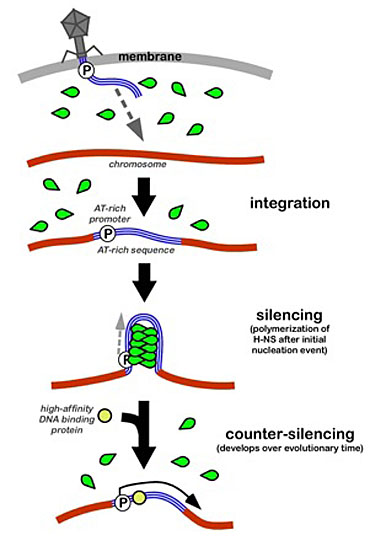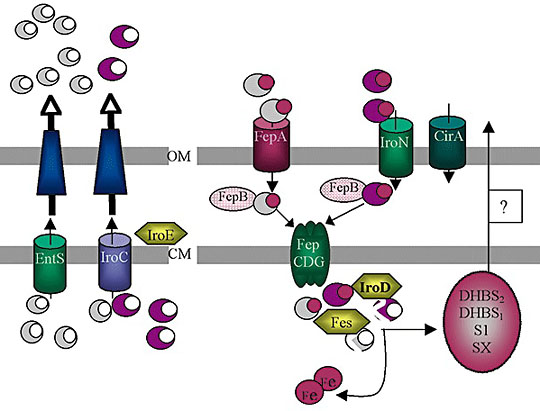| |
 |
|

The Fang laboratory studies bacterial pathogenesis, in particular, the antimicrobial actions of phagocyte-derived reactive oxygen and nitrogen species and the strategies used by pathogenic microbes to resist these host defenses. Specific projects include the identification of novel nitric oxide targets in Salmonella enterica and Staphylococcus aureus, the role of iron metabolism in host-Salmonella interactions, the activation of Salmonella virulence gene expression by alternative sigma factors and other transcriptional regulators, and the mechanisms by which reactive nitrogen and oxygen species damage microbial DNA or impair DNA replication.
Using a whole genome approach, the Fang laboratory recently discovered "xenogeneic silencing" (shown at left), a mechanism by which enteric gamma-proteobacteria can recognize and integrate foreign DNA into pre-existing regulatory networks. |
|
| |
 |
|

Salmonella proliferating in Kupffer cells of C3H/HeJ mice. A three-color merged view obtained by immunofluorescence confocal microscopy demonstrates Salmonella (green) within Kupffer cells (blue, labeled with anti-F4/80) in the livers of infected mice (left). Hepatocytes were labeled with anti-cytokeratin 18 (red). To better visualize the Kupffer cell network, the image was cropped, the hepatocyte signal was removed, and the blue F4/80 signal (Kupffer cells) was changed to red (right). A Z-section along the plane indicated by the dashed line confirms the presence of Salmonella inside the Kupffer cells. |
|
| |
 |
|
Phagocytes use nitrogen oxides to inhibit the growth of intracellular microbes. In vitro, zinc mobilization correlates with bacterial cell filamentation during nitrosative stress. Bacteria from the edge of a zone of GSNO (S-nitrosoglutathione) inhibition were observed by differential interference contrast and fluorescence microscopy (x600) after the addition of the Zn2+-binding fluorophore Zinquin. GSNO-induced cell filamentation is invariably associated with Zinquin-dependent fluorescence (blue), implicating Zn-metalloproteins as critical targets of nitrogen oxides. |
|
![]()